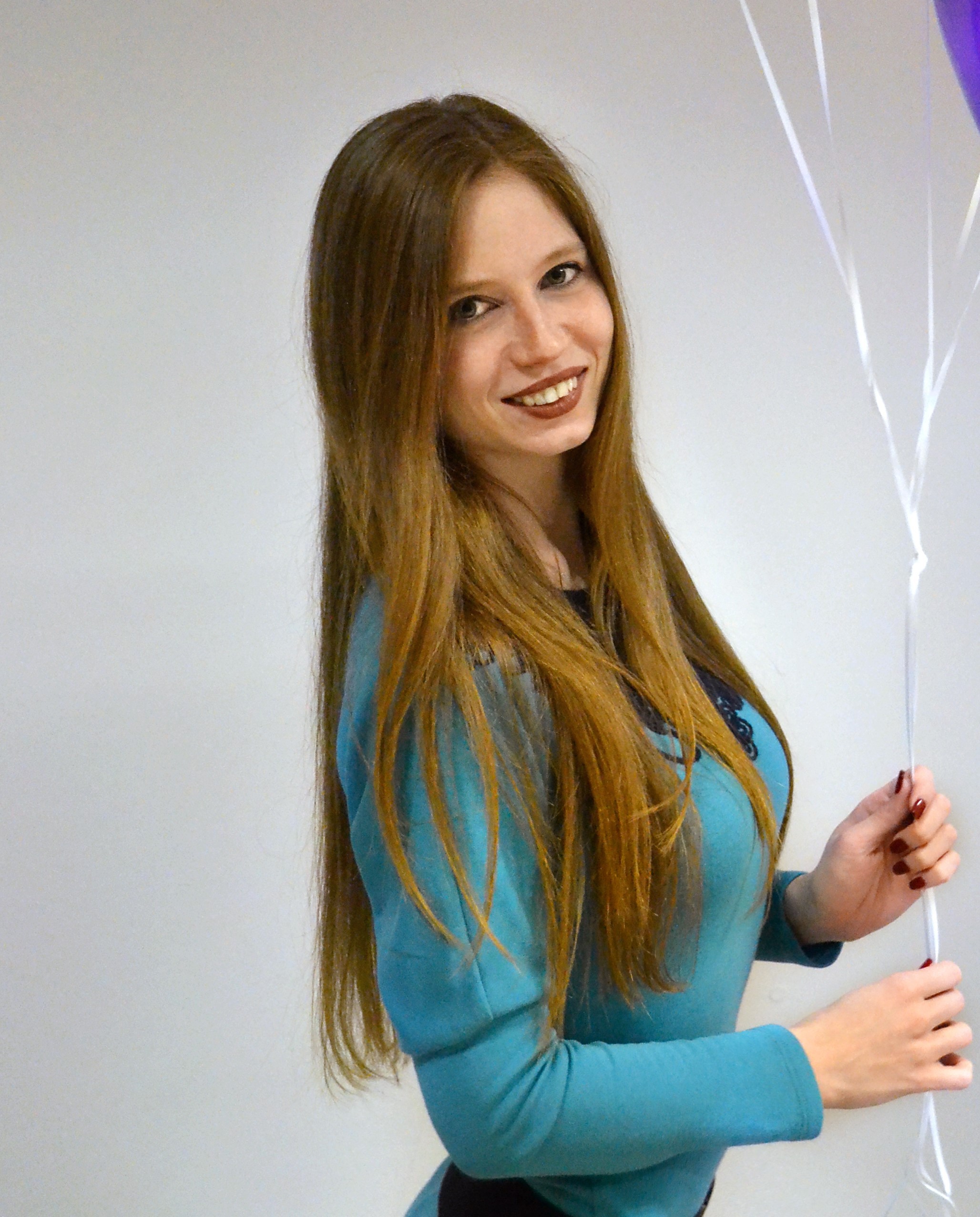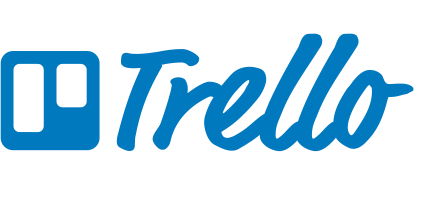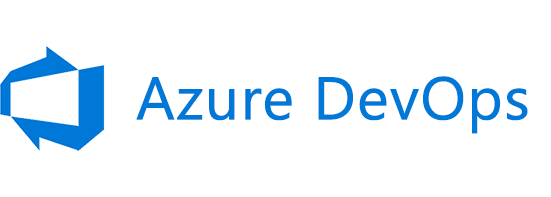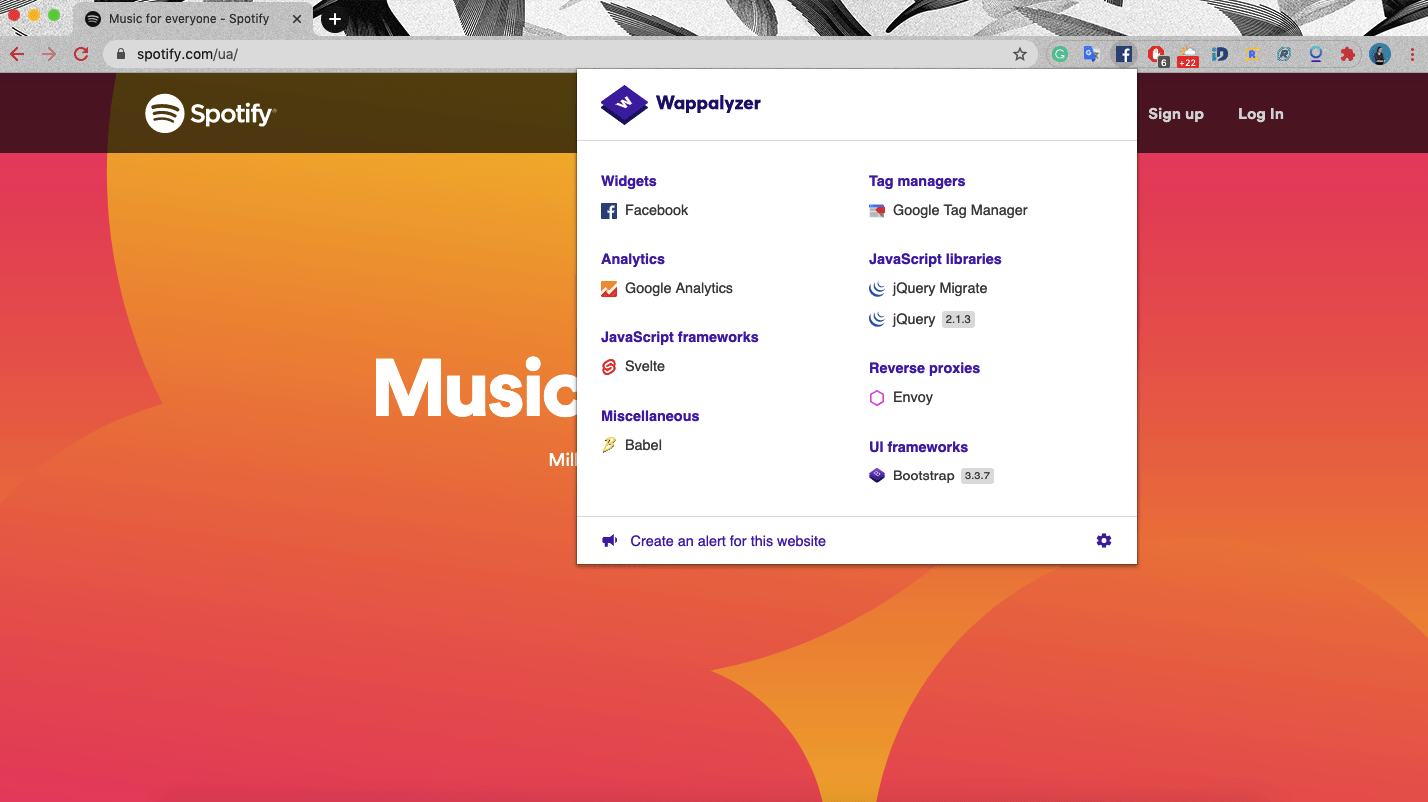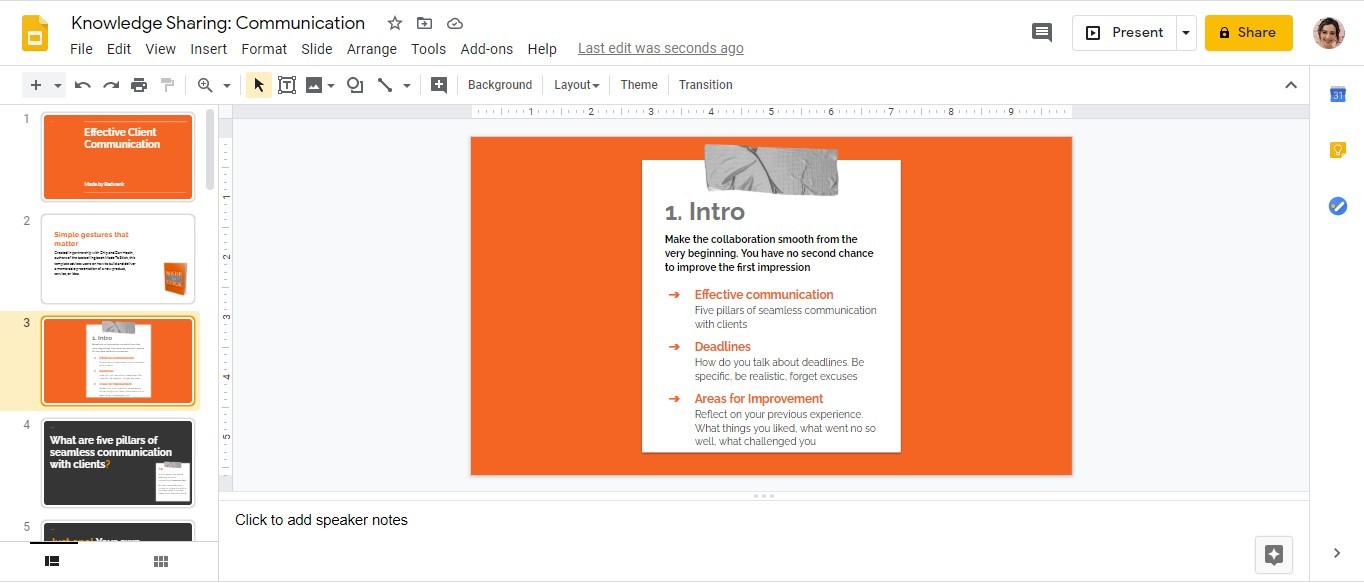The coronavirus pandemic has shaken the entire world, making businesses look for ways to transfer all their operations online without decreasing their employee productivity and profit margins. Those companies who didn’t have a remote work policy already in place were among the least prepared for such a turn of events. Many of them are still undergoing the process of synchronizing all their departments and ensuring that employees can access all the vital resources. As for Redwerk, our business’s nature presupposes communication with international clients who can fully trust us with developing a product from start to finish; therefore, all the interaction happens online. Moreover, Redwerk’s team is distributed between two cities: one office is in Kyiv and another one – in Zaporizhia. With 15-year experience in the IT market, we ensured seamless cooperation across the teams and achieved maximum efficiency in daily work processes, whether working remotely or in the office.
In this article, we have collected the tools our project managers (PMs) use to provide timely assistance both to the clients and the delivery team. Although not everyone may need an array of apps to stay professional, it is always good to be aware of the most popular alternatives that automate routine tasks, save time, and unite the team.
How PMs at Redwerk feel about remote work during quarantine
Employees at Redwerk are used to working remotely: those who have worked for the company for at least one year could work from home one time a week or one month a year. At the moment, there are no restrictions on the work-from-home days; therefore, Redwerkers can work remotely as long as they want. Although the work-from-home practice proved to be successful, staying home at one’s will and being forced to work remotely for an extended period are two completely different scenarios. We wanted to find out how our employees feel about working during the lockdown; therefore, we conducted a mini-survey. Here are some of the most genuine and descriptive responses:
“To be honest, my projects have not been affected much: the team’s tasks had already been distributed, and all the documentation is stored in the cloud. The only difference is that we started to closely monitor employees’ presence by introducing obligatory Slack status updates and reporting working hours in Tempo. We also started arranging everyday video conference meetups for all members of the team,”
“During quarantine, it became more difficult for me to draw a line between working hours and leisure, and now I can be reached anytime as all the necessary tools are at my disposal, which I believe is a plus. At first, I lacked communication with colleagues, but now we make video calls regularly and try to keep the camera on. Apart from discussing merely work-related matters, we get together online for congratulating colleagues with special events – a birthday, wedding, birth of a child, etc,”
“At first, it was difficult for me to get used to a new desk; I also had issues with the Internet, and I didn’t have a second PC monitor. Within some time, I adapted to the new environment: got used to the desk and lack of the extra screen. The Internet malfunction was solved pretty quickly, though. It may also be challenging to work from home if you live with someone because there is a high risk of constant distractions,”
Overall, Redwerk employees did not have much trouble performing their professional duties from home; however, there is a certain level of psychological distress that comes from staying in the same environment for a prolonged time. The Redwerk team preserves excellent productivity and mental health by using common stress-reduction techniques – working out, listening to music, and entertaining after work.
Most popular tools for remote work among Redwerk PMs
Tools PMs use may depend on the business niche and the scope of the project itself. We asked PMs at Redwerk what tools they rely on in their day-to-day operations, and all of them agreed on the essentials mentioned below. Although this list does not cover all the existing PM tools, it is a handy kit both for rookies and seasoned experts.
Project planning and tracking
Some of the very first steps every PM makes are outlining the scope of a project, creating a task schedule, prioritizing tickets, and assigning them to professionals whose skillsets perfectly match the given requirements. The art of proper planning is something many people want to master, regardless of their occupation, as it is key to meeting deadlines and staying organized in general. PMs at Redwerk know how to win clients’ trust and ace projects of various complexity.
Jira is a project management tool for agile teams. Many software development agencies use Jira because it was originally designed exclusively for IT specialists. However, from a bug and issue tracker, it has grown into a cross-department work operating system. Our PMs use it for:
- Creating tickets for epics, stories, tasks, and sub-tasks;
- Prioritizing tasks;
- Distributing assignments among the team;
- Monitoring individual and team performance;
- Tracking step-by-step progress by checking logs;
- Tagging people who have the expertise to address a particular issue;
- Reporting work hours spent on completing a task.
Pricing plans:
- Free (up to 10 users, 2 GB file storage, limited functionality), $0 forever;
- Standard (up to 5000 users, 250 GB file storage, expanded functionality), $7 per user every month;
- Premium (up to 5000 users, unlimited storage, full functionality), $14 per user every month.
Trello is a project management tool suitable for handling both personal and business tasks. The core functionality is similar to that of Jira; however, the approach to managing tasks is different: instead of tickets, one creates lists with cards that can be moved across the board. Trello has a visually appealing UI design and ready-made templates serving as guides for creating lists. PMs at Redwerk use Trello for personal planning to make sure there is a balance between work and leisure. Trello’s primary functions include:
- Creating a board with lists and cards;
- Expanding card description with checklists and attachments;
- Setting deadlines for each task with custom reminders;
- Adding board members to the card;
- Copying, moving, archiving cards.
Pricing plans:
- Free (10 team boards, 1 power-up board, 10MB per file attachment, simple automation), $0 forever;
- Business class (unlimited team and power-up boards, 250MB per file attachment, improved automation), $12,50 per user every month;
- Enterprise (unlimited team and power-up boards, 250MB per file attachment, all-inclusive automation, advanced admin and security features), $20,83 per user every month.
Azure DevOps is a SaaS platform from Microsoft designed to synchronize development and operations teams and facilitate the process of developing, testing, and releasing software solutions. Its range of services is rather broad; however, PMs mostly deal with Azure Boards. Some of our clients prefer working with Azure DevOps rather than Jira; therefore, our team has gained experience in working with this tool. It allows:
- Building a Kanban board;
- Providing comprehensive requirements for each task: description box, acceptance criteria, priority, story points, labels, parent/ related tasks, files upload, sharing options, etc;
- Managing backlogs and sprints;
- Tracking work through queries;
- Compiling a visually appealing dashboard for each project.
Pricing plans:
- Free (one year of popular free services, $200 credit to explore Azure for a month, 25 services that are always free);
- Pricing calculator (the price depends on the number of users, pricing plan, and extra features.
Airtable is a super customizable spreadsheet and database. Instead of tickets or lists, Airtable offers bases that contain multiple tables. These tables can be formatted depending on the project specifics. Our PMs use Airtable to monitor the workload of developers, QA engineers, and designers, which helps to distribute the resources efficiently. They also use it to systematize and store all the vital information on clients, projects, and teammates. The most prominent features of the software are as follows:
- Convenient view options (grid, calendar, gallery, Kanban);
- Rich field types (checkboxes, drop-downs, long notes, links to other tables) drag and drop file attachments;
- Powerful visualization tools (various chart types, page designer, 3D model explorer);
- Robust API (Mailchimp, Instagram, Zapier, Evernote, and many more);
- Synced responses across different platforms;
- Built-in communication tools (video-chat, SMS);
- Time tracker and world clock.
Pricing plans:
- Free (1200 records, 2GB storage, 2-week revision history, limited functionality), $0;
- Plus (5000 records, 5GB storage, 6-month revision history, expanded functionality), $12 per user every month;
- Pro (50000 records, 20GB storage, one-year revision history, advanced functionality), $24 per user every month;
- Enterprise (50000+ records, 1000GB storage, three-year revision history, full functionality), custom fee.
Apple’s Notes and Reminders are indispensable for those who come with brilliant ideas on the way home, during a gym session, or on a commute to work. To make sure their ideas survive through other day challenges and make it to the discussion board, our PMs make notes in the Notes app and turn on reminders to be on time for conference calls and quickly resolve minor issues that may stall the progress if left unattended. There are also similar apps for Android users, such as Evernote or Todoist.


Documentation
Documenting business processes is an integral part of a company’s operations. Without clearly defined workflows, business policies, and rules, employees will not be able to work in sync. Moreover, new employees’ onboarding process will be more efficient if newcomers can easily find all the vital information stored in one place. PMs are the people who update the company’s documentation, add relevant entries, cheat sheets, FAQs, and educational materials for their teammates. As such, they need a tool that can be easily accessed and that has convenient editing and sharing options.
Confluence is a collaboration software designed to store, add, edit, and share vital information across different departments in a company. In other words, it is a cloud platform that allows businesses to build a scalable knowledge-sharing base. PMs at Redwerk use Confluence for documenting all the information on the projects they handle, such as clients’ portraits, project specifications, and meeting notes. With time, our PMs update the existing materials and notify teammates about the changes. Here are the major advantages of the tool:
- Easy info access through the advanced search;
- Rich content (meeting notes, polls, blog posts, how-tos, product requirements, etc);
- Page preview option;
- Convenient sharing and notification options;
- Save-to-favorites feature;
- Multi-platform system.
Pricing plans:
- Free (up to 10 users, 2GB file storage, limited functionality), $0 forever;
- Standard (up to 5000 users, 250GB file storage, expanded functionality), $5 per user every month;
- Premium (up to 5000 users, unlimited storage, full functionality), $10 per user every month.
Alternatives for documentation: Nuclino, Slite, Notion, Kipwise, Bookstack
Technical aspects
Apart from well-developed organizational and communication skills, PMs at IT companies are expected to show a certain level of technical know-how. As facilitators of the development process, PMs spend a lot of time on communicating with clients, clarifying project requirements, and searching for appropriate business solutions. They need to be on the same page both with clients and developers, and their technical expertise often plays a decisive role in landing a loyal client.
Wappalyzer is software that allows PMs to identify what technologies are used on a particular website. Wappalyzer can recognize front-end libraries, APIs, CMSs, CRMs, as well as various marketing and analytics tools. Knowing what kind of software market leaders in different industries use helps keep up with the tech trends that are used in real life. PMs at Redwerk use Wappalyzer to prepare for meetings with clients who give little to no details on the tech stack they used to build a product, yet expect at least rough estimations of the project scope. The features that make Wappalyzer useful and convenient are as follows:
- Technology lookup (on the given website);
- Bulk technology lookup (on many websites simultaneously);
- Datasets (creating a list of websites that use the selected technologies);
- APIs;
- Alerts (receiving notifications on changes in the tech stack of the given websites).
Pricing plans:
available upon request
TestFlight is an app that makes beta testing of iOS products much easier. All that beta testers need is to install the app, accept the invitation link from the developer, and follow the app’s instructions. PMs at Redwerk use Testflight for quick beta testing and checking the latest software updates. Here are the core features of the app:
- 90-day testing period;
- Email and public invitation links (for internal and external testers);
- Test information page with instructions on what features to test;
- Various Apple platforms: iPhone, iPad, Apple TV;
- Up to 100 internal testers;
- Up to 10000 external testers;
- 30+ available languages.
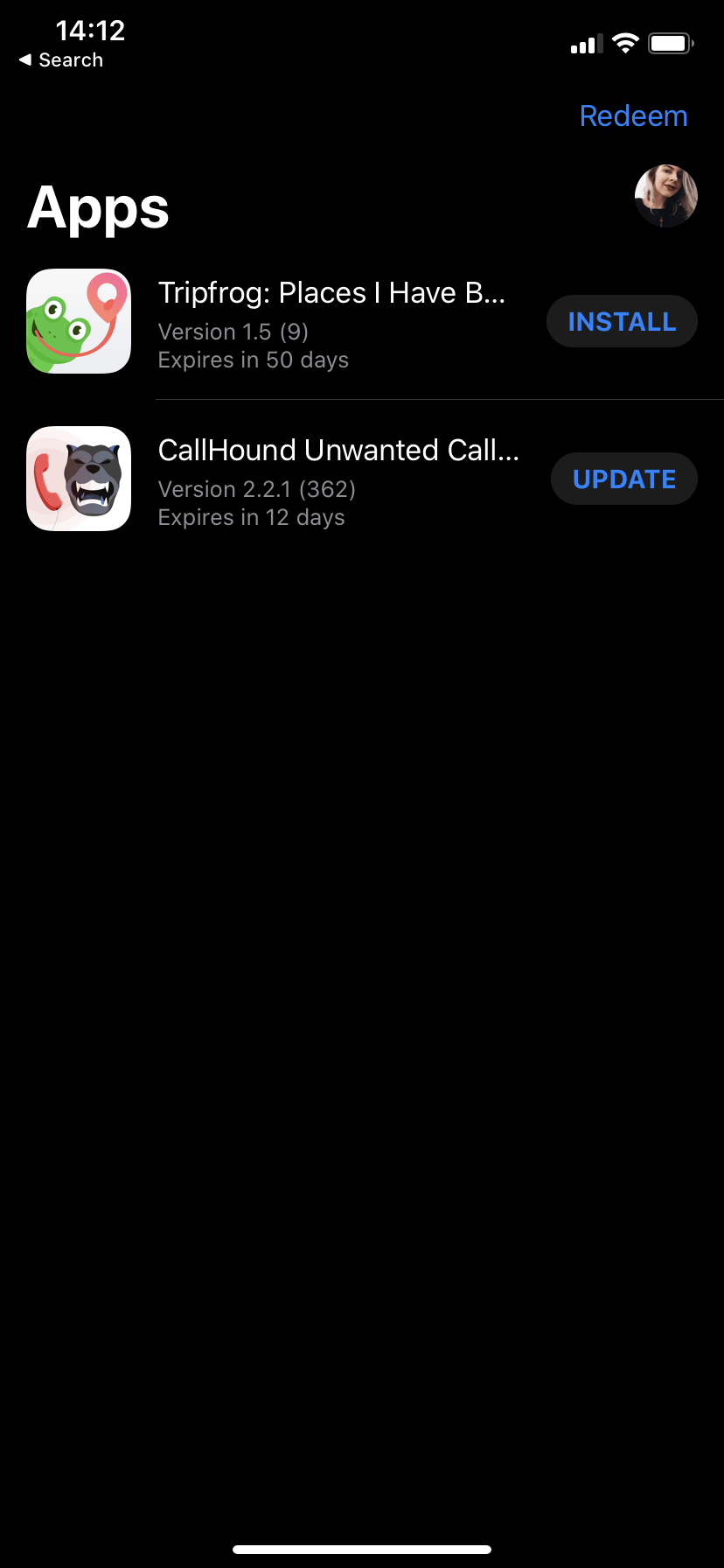

Pricing plans:
free
(only Apple ID is needed)Alternatives for technical aspects: BuiltWith, WhatRuns, TestFairy, UserTesting, WhatCMS
Work with data and files
Creating tickets, writing documentation, preparing for meetings, making presentation slides – all these daily tasks presuppose work with data and files. Sometimes, handling multiple projects may feel frustrating, especially if pieces of information are scattered throughout different folders. However, experienced PMs know how to set up their workspace to achieve maximum productivity and time efficiency. Since there is hardly any task PMs can do without relying on data and visual aids, this section of tools is the longest.
Google Docs is an essential tool for creating a written copy, be it an email, a case study, a technical article, or just a lengthy message. What makes Google Docs more convenient than other text editors is that it is cloud-based, and it saves all the edits automatically, which prevents data loss when your battery dies or your software crashes. On top of that, Google Docs has the following advantages:
- Multiple versions within one file;
- File-sharing options;
- Instant mail notifications on replies to comments or any changes in the file;
- Offline mode;
- Grammar and spelling checker;
- Add-ons and extensions (such as Grammarly, SEMrush).
Pricing plans:
free for personal use
part of G Suite package for businesses
Google Sheets is a tool designed for work with numbers, lists, or any other data that require categorization and analysis. It has similar functionality to Google Docs, which means it automatically saves all the changes; however, the information is entered into a spreadsheet instead of a text file. PMs at Redwerk find Google Sheets especially helpful for tasks that require collaboration, when each member of the team needs to contribute to the file. For instance, our PMs may work on a project estimation request from a client. In this case, they need replies from all team members regarding the hours, technologies, and alternative solutions to address a business need. Google Sheets makes it easy for everyone to work in one file due to its advanced sharing options. Here is the list of its core features:
- Multiple versions within one file;
- Advanced formatting tools for charts and graphs;
- Built-in formulas;
- Pre-designed templates (to-do list, schedule, project timeline, analytics dashboard, pros and cons, and many more);
- File-sharing options;
- Offline mode;
- Multi-platform access (phone, tablet, computer);
- File conversion (excel to doc, and vice versa).
Pricing plans:
free for personal use
part of G Suite package for businesses
Google Slides is a tool for creating professional-looking presentations. Like Google Docs and Google Sheets, it saves all the edits automatically and allows many people to work in the same file. PMs at Redwerk use Google Slides for meetings with the team and clients, and now that everyone works mostly remotely, it is especially important for PMs to make sure everyone is on the same page. With Google Slides, PMs can make Zoom or Skype calls much more informative and exciting, and it takes a second to share a screen with all the needed visual support. Arguments backed by charts or relevant illustrations sound much more convincing and prompt the viewers to ask questions and stay engaged. Here are the benefits Google Slides offer:
- Multiple versions within one file;
- Advanced design tools;
- File-sharing options;
- Sleek design templates (portfolio, prototyping, case study, project wireframes, etc);
- Multi-platform access (phone, tablet, computer);
- File conversion (PowerPoint to Google Slides, and vice versa);
- Wireless streaming (through Chromecast Hangouts and AirPlay).
Pricing plans:
free for personal use
part of G Suite package for businesses
Figma is a web-based vector graphics editor and prototyping tool. It was developed mostly for designers; however, like any other process, design creation requires revisions and feedback from all the parties involved, and Figma creators took this aspect into account. PMs at Redwerk use Figma to fine-tune designers’ work by monitoring the process from start to finish and making sure that customers’ preferences are clearly understood. Figma has a number of pros, such as:
- Unique design tools;
- Mobile-friendly, interactive prototypes;
- Version control;
- Convenient design export via a link;
- Real-time collaboration (co-editing, observing, commenting);
- Plugins;
- Code generation for visual properties and spacing.
Pricing plans:
- Free (up to 2 editors, 3 projects, 30-day version history, unlimited cloud storage, restricted sharing options);
- Professional (unlimited projects, unlimited version history, expanded sharing options) $ 15 per editor every month, free for students and educators;
- Organization (unlimited projects, unlimited version history, expanded sharing options, advanced security, and private plugins) $ 45 per editor every month.
Balsamiq is a tool for creating low-fidelity UI wireframes for websites, web and mobile apps, as well as desktop software. Our PMs use Balsamiq mostly at the discovery phase of the project to help developers estimate the scope and complexity of work. Redwerkers also use the tool when negotiating with clients – either to visualize software requirements specification or offer alternative business solutions. Balsamiq stands out because of the following pros:
- Essential designer tools (UI components and icons, reusable symbols, drag-and-drop);
- Good speed;
- Convenient sharing options (web links, images, interactive PDFs);
- Easy collaboration.
Pricing plans:
- Balsamiq Cloud (2-200 projects) $9-$199 per month;
- Wireframes for Desktop (the price depends on the number of users) $89+;
- Integration with Google Drive, Confluence, Jira (the price depends on the number of editors).
Mindmeister is a mind mapping tool designed to simplify the process of brainstorming ideas, note-taking, and project planning in general. Mind mapping is essential at the initial stages of project development as it allows PMs to keep all the great ideas in one place, discuss them, and build on them. PMs at Redwerk use Mindmeister to outline a future project plan, divide it into distinctive blocks, and prepare an approximate estimation of resources needed for the project implementation. Mindmeister helps to visualize the correlations between different stages of the project, for instance, what experts will be involved at each development stage. Mindmeister is loved by Redwerkers for the following reasons:
- Visually appealing and crystal clear mind maps;
- Templates and custom designs;
- Convenient sharing options (links, bulk sharing, Google Drive integration, Wiki maps);
- Built-in task management (assign tasks, set deadlines, prioritize, and send email reminders);
- Storytelling through presentation;
- Various multimedia attachments (links, notes, images, videos, icons).
Pricing plans:
- Free (up to 3 mind maps, collaboration options, email support);
- Personal (unlimited mind maps, file and image attachments, PDF and image export) $2.49 per user every month;
- Pro (unlimited mind maps, file and image attachments, expanded export options, higher customization level) $4.19 per user every month;
- Business (everything in Pro + user groups, compliance exports and backups, expanded administrative options) $6.29 per user every month.
Coggle is an online tool for creating mind maps and flowcharts. Coggle has similar functionality to that of Mindmeister; however, our PMs use it for a different purpose. Whereas Mindmeister is great for preparing estimation requests, Coggle is handy for creating visually enhanced roadmaps for clients. PMs at Redwerk approach each project from a business analyst’s perspective. For that, they need powerful tools to convey their strategic vision to clients in clear terms. Solving a complex problem becomes much easier with structured decision-making supported with data and arguments from all stakeholders. Coggle has the following useful features:
- Multiple versions of the same file;
- Commonly used design tools (layout, text formatting, color, line style);
- Messages panel for discussions;
- Real-time collaboration (observing, co-editing, commenting);
- Various multimedia attachments (images, icons, labels, links);
- Multiple export options (images, PDF, Microsoft Vision, link).
Pricing plans:
- Free (3 private diagrams, unlimited public diagrams, limited design options, limited sharing);
- Awesome (unlimited private diagrams, unlimited public diagrams, expanded design toolkit, sharable link) $5 per user every month;
- Organization (everything is Awesome + SAML authentication, personal workspaces, bulk export, branded diagrams) $8 per user every month.
Draw.io is a web-based tool for creating different types of charts, mind maps, and wireframes. Our PMs like this tool for its manifold nature: Redwerkers use it for
creating user flows and workflows for clients’ projects, describing the system architecture and logic, defining and optimizing internal work processes. Draw.io can also be used for sketching product wireframes, and it is a universal instrument for a visual representation of any multi-layered concepts. Draw.io has plenty of advantages:
- Abundant shape libraries;
- Templates and custom designs;
- Integrations (Jira, Confluence);
- Diagram import (Visio, Gliffy);
- Numerous export options (Google Drive, OneDrive, Dropbox, GitHub, GitLab, Trello, device).
Pricing plans:
- Free (personal use with no integrations; 30-day trial for teams);
- Cloud (depends on the number of users) $0.55 per user every month;
- Server (depends on the number of users) $10-$220-$459 for 10-25-50 users monthly;
- Data Center (depends on the number of users) $220 for 550 users monthly.
Lightshot is a tool for taking and editing screenshots. PMs take screenshots all the time as they need to be sure that the requirements are conveyed in clear terms. Whether you need to point out a bug, a cool feature on the rival’s website, or an inconsistency in UI, it is much easier to attach a screenshot with red marks on it than to provide a lengthy description of the issue. Our PMs like using Lightshot because it is super convenient: in just two clicks, you can get a high-resolution screenshot and instantly comment on it or highlight the problematic area. Lightshot has the following useful features:
- Fast selection of a screenshot area;
- Editing tools for highlighting a specific area or issue on the screenshot (pen, line, arrow, marker, text, color);
- Social media sharing (Twitter, Facebook, VK, Pinterest);
- Similar images search on Google;
- Multi-platform use (Windows/Mac, Chrome, Firefox, IE, Opera);
- Simple and intuitive UI.
Pricing plans:
freeAlternatives for work with data and files: Lucidchart, XMind, GitMind, Prezi, Moqups
Communication
Transition to everyday work from home has mostly affected the aspect of communication between team members. Those matters that could be easily handled right at someone’s desk now require well-composed Slack messages or emails. Of course, serious discussions involving several stakeholders are held with the help of conference calls. Project management is all about knowing how to approach people, value people’s differences, and motivate everyone to work towards a common goal. Work from home is what has put PMs’ software skills to a test; however, we at Redwerk stay strong and use effective communication tools to connect with each other and our clients regardless of the miles between us.
Slack is a communication platform with a sleek design and advanced functionality. Although it cannot fully replace an email client, it makes written communication much more comfortable as it offers a simple categorization of chats. To catch up with the latest news on the project, all that Redwerkers have to do is to find the needed channel. Apart from office-, project-, and department-specific channels in Slack, we have a channel for all employees where everyone can ask a question, share a joyful moment from their life, voice their concerns, or ask for assistance. Slack is also loved by PMs at Redwerk because of its detailed user profile; the latter contains information on one’s position, working hours, phone number, email, and Skype nickname. Whenever a PM needs to reach another Redwerker, they simply check that person’s Slack status to see if it’s appropriate to discuss a matter. Here is what Slack has got to offer:
- One-to-one messages;
- Project-specific channels for group discussions;
- Shared channels for work with clients;
- Audio and video calls;
- Add-ons (Microsoft OneDrive, Gmail, Zoom, Lucidchart, Udemy, and many more);
- Workflow automation tools (getting feedback, healthcare reminders, travel cost approvals, etc);
- File sharing;
- Search bar.
Pricing plans:
- Free (history is limited to 10000 messages, 10 integrations, one-on-one voice and video calls);
- Standard (unlimited history, unlimited integrations, group voice and video calls, collaboration with outside organizations) $6.67 per user every month;
- Plus (everything in Standard + identity management and 24/7 support) $12.50 per user every mont;
- Enterprise Grid (everything in Plus + advanced security options, up to 500000 users support, assistance from customer success team) custom fee.
Skype is a telecommunications tool designed to send instant messages, make phone calls, and arrange video conferences. Although Skype no longer enjoys an absolute monopoly in the video calling niche, it keeps up with the latest technology trends to give the app the needed speed and a modern feel. PMs at Redwerk usually use Skype for internal meetups either to discuss project-related issues or get together for some team building activities. Here is Skype’s core functionality:
- Up to 50 participants;
- Audio, video, and phone calls;
- Live chat with colorful reactions (emoticons, GIFs, mojis, stickers);
- Screen sharing;
- Call recording and live subtitles;
- Multi-platform (phone, tablet, desktop, web, Alexa, Xbox).
Pricing plans:
Free (except for phone calls)
Microsoft Teams is a video communication platform, also known as Skype for Business. From the moment Microsoft acquired Skype, it has been building on it to develop a competitive video conferencing tool for businesses and large enterprises. Some of our clients use Microsoft Teams as their go-to communication tool; consequently, we’ve had a chance to test it out, and we must admit, Redwerkers do enjoy it. Microsoft Teams offers the following advantages:
- Up to 250 participants;
- Live events with up to 10000 attendees;
- Audio, video, and phone calls;
- Instant messaging;
- Collaboration tools (note-taking, scheduling assistance);
- Screen sharing and recording;
- Multi-platform (phone, tablet, desktop, Polycom, Yealink, etc);
- Numerous integrations and automated workflows;
- Customized backgrounds.
Pricing plans:
- Free ( 10GB of team file storage, 2GB of personal file storage;
- Business Basic (up to 250 users, 1 TB of file storage per user;
- Business Standard;
- Office.
Zoom is a video conferencing tool for personal and professional use. We at Redwerk use Zoom when we need to gather all the team members from different departments and offices together to celebrate our anniversary, someone’s wedding, birthday, or any other special event. Our PMs use Zoom for communicating with clients: be it a video or audio call, Zoom provides enough options for seamless communication. Zoom has similar functionality to that of Skype; however, it offers more features for interactive collaboration. Here are the major strengths of the tool:
- 100+ participants;
- Audio, video, and phone calls;
- Live messaging;
- Screen sharing;
- Call recording with searchable transcripts;
- Built-in collaboration tools (polling, Q&A, virtual hand-raising);
- Multi-platform (desktop, mobile, web);
- Virtual backgrounds;
- Integrations (Google Calendar, Google Drive, Salesforce, Marketo).
Pricing plans:
- Free (up to 100 participants, 40 mins for group meetings, unlimited number of sessions);
- Pro (up to 100 participants, 24-hour meeting duration, expanded functionality) $14,99 per host every month;
- Business (up to 300 participants, 24-hour meeting duration, advanced functionality) $19,99 per host every month;
- Enterprise (up to 500 participants, 24-hour meeting duration, full functionality) custom fee.
Google Meet is a video conferencing tool that is often viewed as a Google Hangouts’ upgrade as it was designed with large businesses in mind, and it offers many more features for streamlining communication processes across different teams. We at Redwerk adjust to our clients’ preferences in terms of communication tools. We need to know that our clients feel comfortable; therefore, we use Google Meet on their request. Moreover, being techies at heart, we are eager to explore new technologies and test the most popular features in a real-life setting. Google Meet has an array of great features, though some of them are still under development:
- 100+ participants;
- Audio, video, and phone calls;
- Live messaging;
- Screen sharing;
- Call recording;
- Multi-platform (desktop, mobile, third-party systems – Cisco, Polycom, Sony);
- AI-powered cancellation (coming soon);
- Live streaming in-domain (coming soon);
- 2-step verification.
Pricing plans:
- Free (up to 100 participants, one-hour meeting duration, unlimited number of meetings);
- G Suite Essentials (up to 150 participants, 300 hours, unlimited number of meetings, dial-in phone numbers, advanced security) $10 per user every month starting October 1, 2020;
- G Suite Enterprise Essentials (up to 250 participants, 300 hours, unlimited number of meetings, advanced functionality, full security package) $20 per user every month starting October 1, 2020.
WhatsApp is an instant messaging app that works on iOS, Android, Mac, and Windows PC. It is more popular in the US and Western Europe than in Ukraine; however, our PMs have no trouble using it. WhatsApp is super convenient for timely communication as most of us spend a considerable amount of time with a phone in our hands. The positive aspect of this bad habit is the ability to address a customer’s query right away, which strengthens our relations with clients and business partners. WhatsApp has these great features:
- Up to 256 people in a group chat;
- Real-time messaging;
- Audio and video calls;
- Easy file sharing;
- WhatsApp Business API.

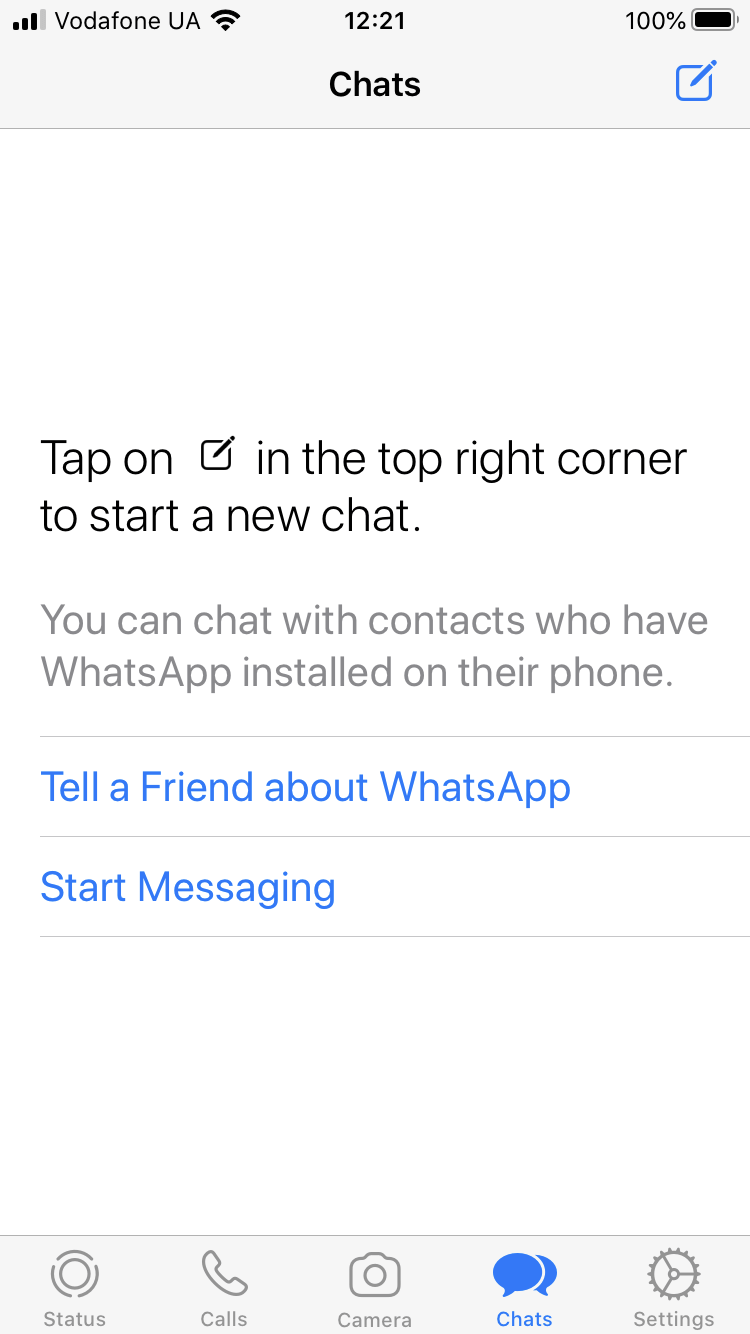
Pricing plans:
free
WorldtimeBuddy is a website that shows the exact time at the chosen location. Apart from that, the tool is helpful in scheduling online meetings and business travels. Our PMs use the tool to choose the right time for meetings with our international clients. It is super convenient as you can select a free time frame and see if the time on the client’s end is suitable for a call or not. One more advantage WorldtimeBuddy has is creating a meeting in Google Calendar without leaving the website. Here are the main features of the tool:
- 20000+ time zones and locations;
- Arranging locations (reordering in the list, removing, marking as home, renaming, grouping);
- Scheduling (integrations with device calendars to create an event);
- Visual helpers (option to highlight weekends, native format, timezone info, DST warnings, native format for each location);
- Multi-platform (desktop, mobile).
Pricing plans:
- Free ( 4 locations, 1 group, limited calendar, limited mobile app functionality, contains ads);
- Silver (20 locations, 2 groups, unlimited calendar, full mobile app functionality, ad-free) $2.99 per user every month;
- Gold (unlimited locations, unlimited groups, unlimited calendar, full mobile app functionality, ad-free) $5.99 per user every month.
Alternatives for communication: BigBlueButton, Mattermost, Discord, GoToMeeting, Whereby
Summing up
The Covid-19 pandemic has made businesses rethink their management styles and look for ways to streamline remote work business processes. Setting no limits to work-from-home days and maintaining half-empty offices have now become “the new normal.” Considering the additional stress employees undergo because of the blurred edges between work and leisure, it is only logical to equip them with all the necessary tools that help automate routine tasks and convey ideas efficiently.
Although our guide of project management tools is by no means exhaustive, we hope you found a suitable tool for your current needs. Stay strong and ace your projects together with Redwerk!
See what enterprise tools we developed for Mass Movement to streamline their internal workflows and ease the work of regional managers




